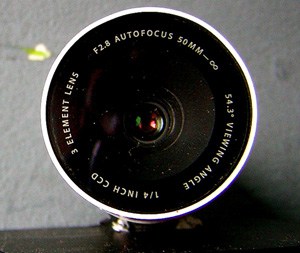
Photo by Kevin Steinhardt/flickr.com
Days after the House dramatically expanded webcasting of its proceedings, the Senate may be poised to do the same.
Senate Majority Leader Michael Sanchez, D-Belen, has introduced Senate Resolution 1, which would expand video webcasting from the Senate floor to include multiple cameras instead of the one that’s currently used.
The resolution would eliminate the part of the current webcasting rule that requires video webcasting “from a single camera installed at the rear of the chamber” and replace it with words that state that the video stream shall be “produced from cameras configured and operated in such a way that as much of the chamber is displayed as practicable but that no material on members’ desks, computer monitors or similar devices can be read or viewed except as would otherwise be possible with an unaided eye.”
The resolution is awaiting a hearing in the Senate Rules Committee. If it’s approved there, the proposed rule change would also need the backing of the majority of senators in a floor vote. To bypass the committee if it doesn’t approve the rule change, the resolution would need approval of two-thirds of senators in a floor vote.
In addition, Sen. Eric Griego, D-Albuquerque, plans to introduce a resolution today that would require the Senate to begin audio webcasting from committee meetings this session and begin video webcasting of Senate committee meetings next year.
The resolution isn’t yet available online, but Griego said it’s modeled after similar legislation the House approved on Friday.
“Transparency and accountability should be cornerstones of our democracy. Many key decisions are made in committee. The public should not be left in the dark because they can’t make the trek to Santa Fe,” Griego said.
The House, after changes approved Friday, should have full audio and video webcasting of floor sessions and committee meetings beginning next year. If the Senate approves the rule changes proposed by Sanchez and Griego, it should too.
A prior version of this posting incorrectly stated that approval of the Senate Rules Committee and of two-thirds in a Senate floor vote was needed to enact the new rules.
